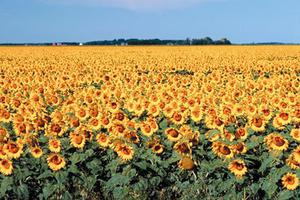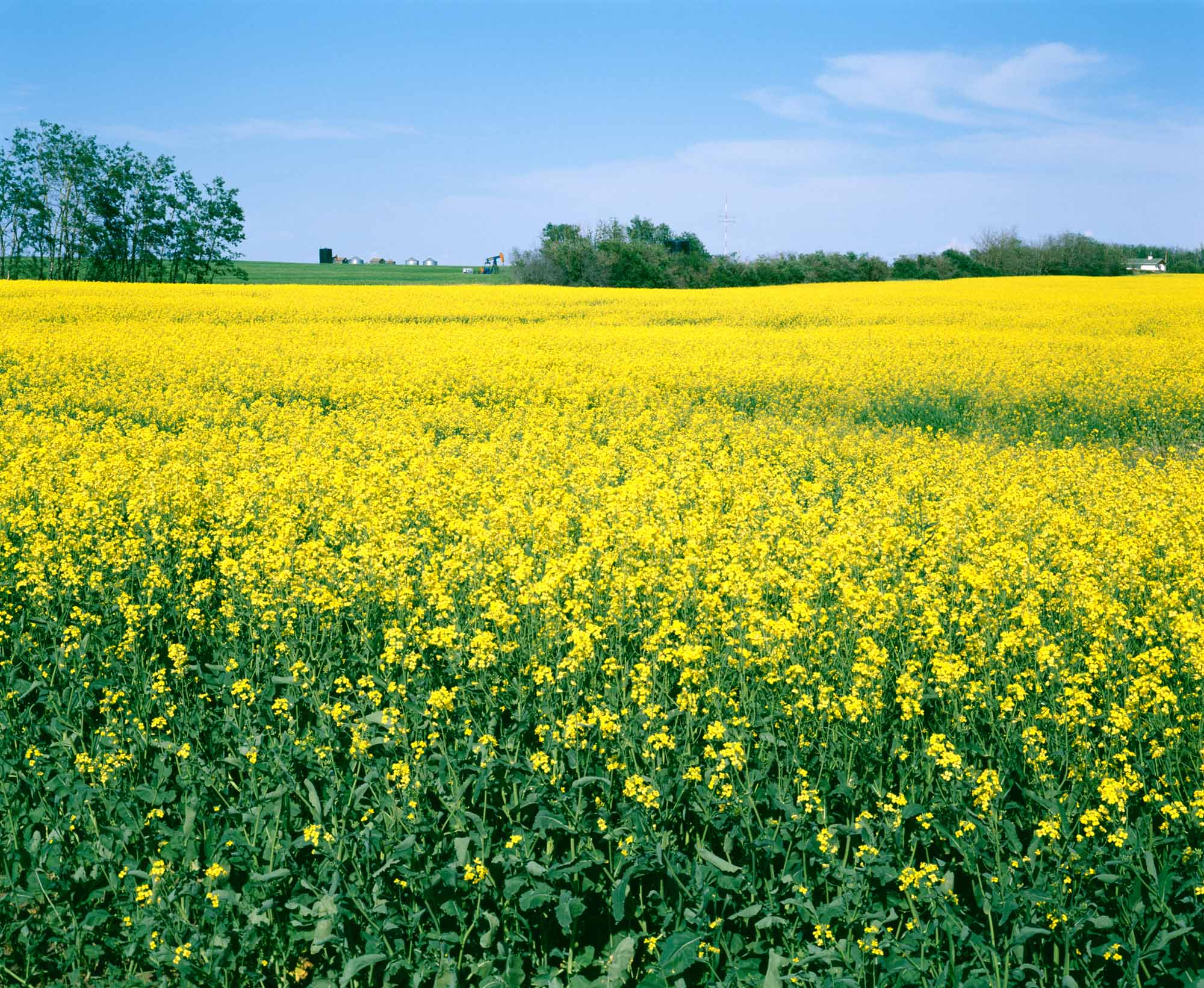Oilseed Crops are grown primarily for the oil contained in the seeds. The oil content of small grains (eg, wheat) is only 1-2%; that of oilseeds ranges from about 20% for soybeans to over 40% for sunflowers and rapeseed (canola). The major world sources of edible seed oils are soybeans, sunflowers, rapeseed, cotton and peanuts. Seed oils from flax (linseed) and castor beans are used for industrial purposes. Edible fats and oils are similar in molecular structure; however, fats are solid at room temperature, while oils are liquid.
Fats and oils are essential nutrients, comprising about 40% of the calories in the diet of the average Canadian. Edible vegetable oils are used as salad or cooking oils, or may be solidified (by a process called hydrogenation) to make margarine and shortening. These products supplement or replace animal products (eg, butter, lard), supplies of which are inadequate to meet the needs of an increasing world population.
While there are many uses for industrial vegetable oils, total world production is only about 3% of that of edible oils. Industrial applications are based on the properties of particular fatty-acid components of these oils. For example, flaxseed oil, rich in the unsaturated fatty acid linolenic, is a drying oil and is used in protective coatings (eg, paints, varnishes). Vegetable oils are used in putty, printing inks, erasers, coating or core oils, greases, plastics, etc. The residue remaining after the oil has been extracted from oilseeds is an important source of nutrients for farm animals. Oilseed meals from soybeans, peanuts, rapeseed and flaxseed are rich in protein; mixed with other ingredients (eg, cereal grains), they provide nutritionally balanced feeds.
The major oilseeds grown in Canada are soybeans, sunflowers, canola and flax. In addition, experimental production of peanuts on a commercial scale began in 1981 in southwestern Ontario. Plant breeding experiments are underway at the Agriculture Canada Research station, Saskatoon, Saskatchewan, to develop an edible oil from mustard seed and a usable animal feed from the residue. The program involves reducing the content of 2 harmful substances, erucic acid and glucosinolate, which were formerly a problem in rapeseed oil.
Soybeans require a relatively long growing season (100-140 days) and warm temperatures; hence, Canadian production is concentrated in southwestern Ontario. Sunflowers will tolerate a somewhat shorter (100-120 days), cooler growing season; most Canadian production occurs in southern Manitoba. Flax and canola are adapted to the relatively short, cool growing season of the Prairie provinces and most production occurs in that area. The size of the area of adaptation and the development of varieties with improved quality have permitted canola to become the major edible oilseed crop in Canada.
Cultural practices have been developed to obtain optimum production from each crop. Soybeans and sunflowers are usually grown as row crops; flax and canola are solid seeded. The usual seeding rate for soybeans is 130 kg per hectare; sunflowers, 6 kg/ha; canola, 7 kg/ha; flax, 38 kg/ha. Small-seed crops, flax and canola, are seeded at depths of 2.5-4 cm; larger-seed crops, sunflowers and soybeans, may be seeded up to 10 cm deep if deep seeding is required to reach moist soil. Weeds are controlled by cultivation in the row crops; by crop rotation in solid-seeded crops; and by extensive use of herbicides. Diseases are controlled by using disease-resistant cultivars (commercial varieties), and by seed treatments and fungicides. Insecticides are used to control outbreaks of insect pests (see Pesticides).
The seed yields for flaxseed, canola, soybeans and sunflowers in Canada range between 1.2-1.5 t/ha, 1.7-2.0 t/ha, 2.5-2.9 t/ha and 1.3-1.6 t/ha, respectively. High soybean yields can be attributed to the longer growing season and relatively favourable moisture conditions in Ontario. The other major oilseed crops are grown in a shorter, dryer season, and yields are often reduced by moisture deficiencies. Between 2007 and 2011, the average annual production of flaxseed, canola, soybeans and sunflowers in Canada was 643 200 Mt, 12 414 200 Mt, 3 626 000 Mt and 85 260 Mt, respectively. Edible oilseed production, which began during the Second World War, now provides the raw material for a multimillion-dollar crushing, refining and processing industry. During the last three decades, Canada has changed from a major importer to a net exporter of edible oil and oilseeds.

 Share on Facebook
Share on Facebook Share on X
Share on X Share by Email
Share by Email Share on Google Classroom
Share on Google Classroom







